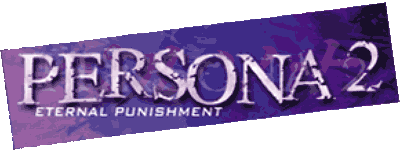
-- Carl Gustav Jung, Alchemical Studies
What do C.G. Jung, H.P. Lovecraft, and Japanese schoolgirls have in common? For one thing, creepiness is a big part of the allure of all three. For another thing, together they form the subject matter of Persona 2: Eternal Punishment, one of the most underappreciated RPGs of the late nineties.
Eternal Punishment (Batsu in Japanese) is very closely tied to its prequel, Persona 2: Innocent Sin (Tsumi). The two stories are mirror images of each other, taking place at the same time in two mysteriously linked parallel universes. Innocent Sin was released only in Japanese, so for English speakers much of the story remains a puzzle half-completed.
But in a way this is appropriate to the game's dreamlike tone. The characters of the sequel know of their twin universe only through rumors and deja vu. So Western players are placed in the same position of confusion and longing that afflicts Maya and Tatsuya. The many crosslinks between Tsumi and Batsu are described in the Deja Vu section of the shrine.
Created and Maintained by:
Thornlet

Acknowledgements: this is a huge game, and I could never possibly have gathered all the information in the shrine myself. I'm especially grateful for the wonderful walkthrough by Eric Lamphear, information on the contact system from Philippe Cadieux, and details on aspects of the magic system from the individual known to the Internet as "Archaeopteryx." Perhaps most helpful of all were the good people at Allegory of Whatever, without whom I never would have puzzled out some of the misspelled reverse translations of demon and persona names.
Thanks, everybody!
Persona 2: Batsu © 1996, 1999, 2000 by Atlus
